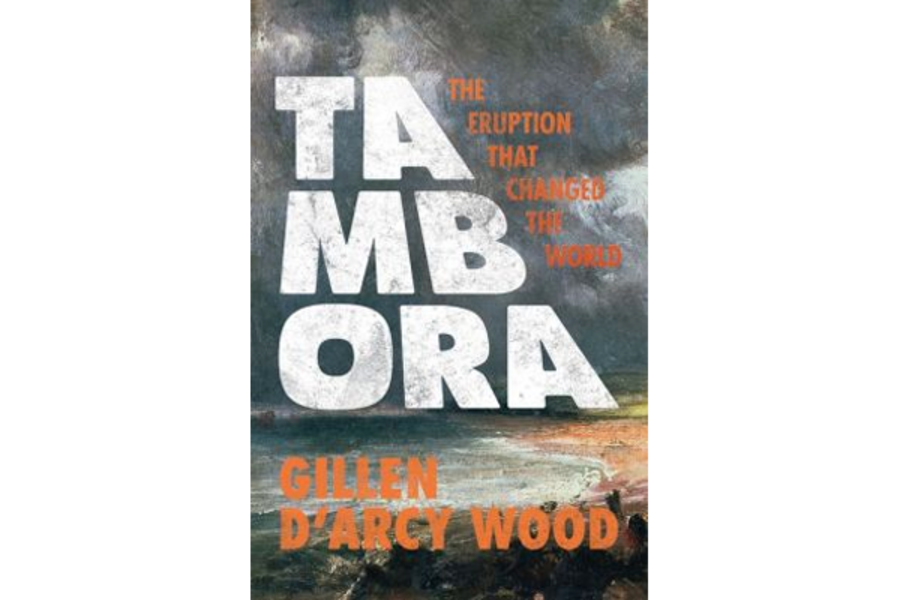'Tambora' tells the story of a little-known volcano that changed the world
Loading...
Step aside, Mt. Vesuvius. You too, Mt. St. Helens. Don't even think about it, Krakatoa.
When it comes to volcanos, a new book argues, the big names are small potatoes. The real power player is Tambora, which blew its top almost two centuries ago, spreading chaos and mayhem around the globe.
Yes, this is another one of those books with a subtitle explaining how something – a map, a weapon, even a kind of fish – "Changed the World."
This time around, though, there's a good and fresh case to be made. Tambora, writes author Gillen D'Arcy Wood, not only disrupted the weather across the globe but also deeply affected the course of human history to this day.
There are bigger stakes here than just another intriguing glimpse at the past. By understanding Tambora's unleashing of climate change, Wood believes, we can better appreciate the devastation that our own future holds as we go in the opposite direction from the volcano eruption's global cooling.
Yes, global cooling. The "climate emergency" spawned by the 1815 eruption of Tambora sent much of the world into a big chill. Crops failed amid a mix of frost, flood, and drought. Beggars filled the streets, food vanished, and disease ran rampant.
"For three years following Tambora's explosion, to be alive, almost anywhere, meant to be hungry," Wood writes. "Villagers in Vermont survived on hedgehogs and boiled nettles, while the peasants of Yunnan in China sucked on white clay."
Some of this is familiar. Readers may have heard of 1816, the "Year Without a Summer," also known as "Eighteen Hundred and Froze To Death," or seen reports linking the ash from the Tambora eruption to the stunning sunset paintings of English master J.M.W. Turner.
Indeed, a 2013 book called "The Year Without Summer: 1816 and the Volcano That Darkened the World and Changed History," by William Klingaman and Nicholas Klingaman, treads over very similar ground as Wood's "Tambora: The Eruption that Changed the World."
So what's different this time around? The scope. Wood, a professor of English at the University of Illinois, digs deeply into both dry weather statistics and the lush lives of the 19th century's shining stars of English literature.
Lord Byron, Percy Shelley, Mary Shelley are all here, shivering themselves silly and – in Wood's view, at least – being greatly influenced by the weather and tumult around them. Wood even finds the roots of Frankenstein's monster in the after-effects of the eruption.
"Tambora" can be a challenging read at times. Wood has limited storytelling skills, and he often sets readers adrift in jargon about "sulfate deposition," "pyroclastic plumes," and "multiproxy reconstructions" without explaining the science in simple terms.
Still, he makes a convincing case that Tambora "spawned the most devastating, sustained period of extreme weather seen our planet in perhaps thousands of years." And the book comes alive when he lets the people of the 1810s tell their own stories of skies full of heat-blocking ash and towns full of misery.
In France, a visitor – coincidentally the former British governor of the Java, home to Tambora – finds "an air of gloom and desertion" in villages turned into ghost towns. In disease-torn India, a British clergyman watches the ghastly collections of dead and dying on the shores of the Ganges as "the lurid gleams of the blazing fires reflected by the waters" give "an unearthly appearance" to the victims.
Wood's wide-ranging mission to understand the effects of climate change also send the reader on voyages into Chinese poetry, the opium trade, an Irish famine, and the evolution of Arctic exploration. Even the crop failures and debts of an aging Thomas Jefferson figure into the big picture, all part of a devastating economic collapse that Wood blames on the ash from Tambora.
There's another potential volcanic villain in the early 1800s, but this one remains unidentified. Evidence suggests that a volcano erupted six years before Tambora and changed the world's climate. But weirdly, no one's been able to confirm the existence of this mystery eruption.
Wood doesn't spend much time on "1809 Unknown," as he calls it, preferring to focus on Tambora. He piles on so much evidence of its influence that he actually challenges his own case in the process: Could one volcano have really wreaked this much havoc? It's hard to say. Non-scientists will have trouble deciding for themselves amid the impenetrable graphs of "Tambora," and it's not clear what critics of this theory have to say.
Then there's the inconvenient truth that the twists of history can't reveal the roads not taken. Perhaps the last two centuries would actually have been worse for humanity if a volcano in the middle of nowhere never exploded. Looking forward, maybe global warming will bring unanticipated benefits beyond newfound beachfront property in inland areas around the world.
Even when his words are taken with a healthy dose of doubt, however, "Tambora" convincingly shows that massive climate change can be hugely destructive and deadly. And regardless of whether Wood is right about "Frankenstein," we have much to learn from this monster unleashed by the earth.
Randy Dotinga is a Monitor contributor.








